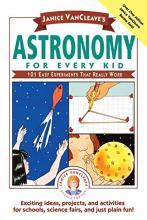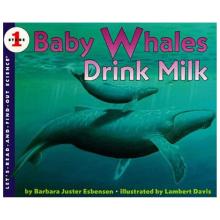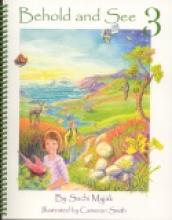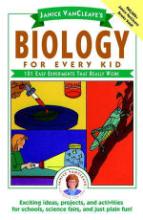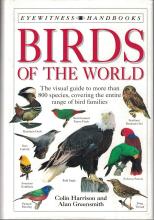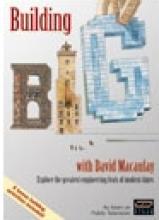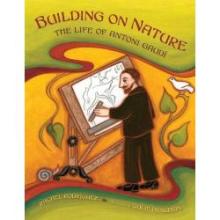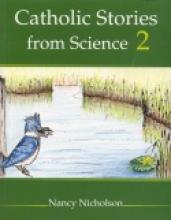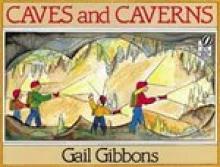Science
Astronomy for Every Kid
Offering "Exciting ideas, project, and activities for schools, science fairs, and just plain fun," this book is one in a series that is very popular with homeschoolers (and understandably so). The book covers seven major topics - Planets, Space Movement, The Sun, The Moon, The Stars, Space Instruments and Space/Space Travel. Each experiment uses simple experiments and explains (briefly) the purpose, the procedure, the expected result and a brief but very understandable explanation of why it happened. Black and white sketches illustrate each experiment as well. To give you an idea of the kind of material that is covered, here are a few of the experiment descriptions/purposes (out of 101 total):
- "To determine how color affects a planet's surface temperature"
- "To demonstrate a method of proving that the Earth rotates"
- "To determine why planets move smoothly around the Sun"
- "To simulate aiming a spacecraft for the Moon"
- "To determine why stars appear to rotate"
- "To determine why radio wave receivers are curved"
I found the "why" segments of each experiment helpful background reading for me to brush up on my science knowledge.
Baby Whales Drink Milk
A nice picture book which introduces basic facts about whales and what they are: mammals rather than fish. Includes nice pictures (with some beautiful scenery) and informative text.
Behold and See 3
I've been telling my friends who've asked about this book that I've never felt enthusiastic about a science textbook until now. This beautiful book, printed in full color on thick, glossy pages is really remarkable. The author, Suchi Myjak, is a Catholic homeschool mother with a Bachelors and Masters in Electrical Engineering. She worked in a chip design group at Intel Corporation until the birth of her first child.
There are three areas in which I think this book particularly excels...
First are the beautiful watercolor illustrations by Cameron Smith. (You can view some of his works on his website at http://www.frangelico.org). These illustrations are engaging and will really help draw students into the wonder and amazement of God's creation. The text also includes a number of beautiful photographs.
Second is how engaging the book is. Now, the word 'engaging' is thrown around a lot and usually has to do with how readable and interesting a book is. Behold and See 3 is certainly engaging in this respect. But it goes even deeper to a more complete meaning of 'engaging' that involves the active participation of the student in more fully understanding concepts by use of reflective questions, games, comparison charts and meaningful (but simple) experiments and hands-on activities (like mapping the tongue and making a mini-ecosystem in a bottle).
Third is its Catholic content. Behold and See 3 exceeds my expectations in this regard. Catholic material isn't just tacked on to an ordinary text, it is naturally incorporated into the text. It actually uses ideas familiar to Catholic children from the spiritual realm to better understand science (while retaining an excellent sense of the purpose of science in helping our children get to heaven). For example, in the introduction to the Chapter on Matter, the author helps children understand the concept of matter by contrasting it with the spiritual world that we cannot see and that science cannot study. Also, religious stained-glass windows are used to enhance part of the discussion about light and EWTN is used as an example of something that uses satellite technology. The text is further enhanced by quotations from the Holy Bible and the Catechism of the Catholic Church.
After an introductory chapter that explores the idea of what science is, why we study it, some basics on the scientific method and instructions for starting and keeping a science notebook, the text covers three primary areas:
The first segment, on Physical Science, includes chapters on Matter, Force and Energy and Astronomy. In this segment, children will study: states and properties of matter, mass and volume, forces, gravity, magnetism, friction, light, sound, the Earth's crust and atmosphere, the sun, the moon, keeping time, day and night, the solar system, the stars, space travel and satellites.
The second segment, Life Science, includes chapters on Animals, Plants and Ecology. This segment covers: animal classification, animal protection, hibernation and migration, the differences between animals and man, 'wild' and 'tame' flowers, parts of plants, seeds and growing plants, what plants need to grow, plants we eat, plants and the seasons, trees, animal habitats, food chains and food webs, ecosystems and stewardship of God's creation.
The third segment, on the Human Body, includes chapters on Anatomy, the Senses and Nutrition/Health. This segment covers: body proportions, skin pigment, the skeleton, joints, muscles, the heart, lungs and breathing, circulation, the brain, the five senses, nutrients, a balanced diet, food groups, the virtue of moderation, exercise and food safety.
I'm really very, very impressed with this book. Full-color books like this are expensive to produce, particularly for small Catholic companies, but I think that the quality of this text is well-worth its price (approximately $45).
This book was donated for review by Catholic Heritage Curricula
Biology for Every Kid
In its segment on "Experiments that Teach Us About Ourselves: The Amazing Human Body" this book provides 35 experiments about the body (the other segments of the book are about plant and animal life. While certainly not a comprehensive anatomy course, the book does provide interesting and simple experiments (which can easily performed at home with fairly ordinary materials) that would provide a helpful supplement to the study of anatomy.
Approximately one third of this book is devoted to "Experiments for the Beginning Biologist: The World of Plants." In the typical Van Cleave style, this segment provides 35 experiments relating to plant life that are simple and informative (and can easily be done in the home). Most experiments are designed to demonstrate certain properties of plant life (such as osmosis and diffusion, what causes plant stems to wilt, what makes plants burst when over-watered, and how water is transported through plant stems). Other experiments determine certain questions such as how plants take in nutrients and whether it matters which direction seeds face when they are planted. Each experiments concludes with an explanation as to the "why" of the results. I find these simple but very helpful (even for moms!).
Another third or so of this book is devoted to "Experiments in the Animal Kingdom: Introductory Zoology." In the Van Cleave style, this segment provides simple experiments (easily performed at home) involving molds, fungi, mini-organisms, yeast, fireflies, butterflies and moths, spiderwebs, crickets, grasshoppers, flies, goldfish and earthworms. In addition to experiments involving observation and/or manipulation of these small creatures, you will find experiments which "illustrate" properties of creatures (such as a camouflage and suction) without actually working with animals.
Birds of the World
This is my favorite of the Dorling Kindersley Eyewitness Handbooks and I would venture to guess that it's probably the best bird handbook you can find. Hundreds of birds, from doves and swallows, to hawks and falcons and tropical birds are included with clear photos, a small map of where they can be found, an icon showing how large they are in comparison to the book, and other basic information about their habitat, migration, etc. Our family has used this guide extensively in identifying and learning more about the substantial variety of birds we find in our own backyard. It's also interesting to see pictures of the sorts of birds we probably won't see in our backyard, such as penguins, turkeys, and eagles. The information appears to be limited to facts about different species of birds, rather than getting into more theoretical and philosophical (not to mention controversial) areas such as evolution and the environment.
Building Big with David Macaulay
This set of five DVDs by artist/architect David Macaulay provides many hours of insightful entertainment and a great introduction to science and technology on a practical level. Each themed film - Bridges, Skyscrapers, Tunnels, Domes and Dams - provides an in-depth historical treatment of the particular structure, interesting stories and overviews from famous structures, and basic scientific principles involved in each project.
The set features lots of great location shoots with David Macaulay narrating interesting stories and pointing out details of each site.
To give you an idea, "Tunnels" covers aqueducts and water-carrying tunnels of Ancient Rome, early canal and train tunnels of the 19th century (particularly in England and the U.S.), archaic and modern methods of tunnel digging (particularly under rivers), issues involving tunnel safety (both during the project and during use afterwards) with a special emphasis (in all areas) on the building of the Channel Tunnel in the 1990s between England and France. Each video also includes a "Building Small" segment and pamphlet so that families can tackle simple science projects at home that demonstrate principles of architecture.
Our family has really enjoyed these movies - from the four year old all the way up to Mom and Dad. The material is substantial, but easy to understand (particularly with the excellent use of computer graphics and artistic sketches).
I would recommend parental supervision with young children, at least for the first viewing. There are a few things that might be scary for little ones, such as a spooky introduction to the Tunnel show and some photos from an airplane crash in to the Empire State Building that might be a little disturbing. There are also some points in other movies that would be worthy of discussion, such as the environmental issues that come up in the Dams movie. Those are all the "sticky" parts I can remember at this point. I am hoping to view them again soon and will add to this list as needed. Overall, I consider the series to be very worthwhile and enjoyable.
Set of 5 DVDs or Videos (approximately 1 hour each)
Building on Nature
Like most art students and lovers, I have had mixed feelings about the architecture of Gaudi all my life. When our oldes son visited Barcelona and sent pictures of Gaudi buildings, I planned on learning more about him. Now I find this new and remarkable picture book telling children about a man who was perhaps little understood during his lifetime.
What I find in the warmly-illustrated pages is a likeable man! A devout Catholic, a lover of nature and of poverty, married to his life's hard work. Perhaps his art isn't traditional, in any shape or form, but there is a genuine aspect of Gaudi's work that one can't help being attracted to.
This picture book does a good job of bringing his life and work to young children and it is a fun read aloud, written in the present tense, in poetic lines. The author's note adds important biographical information including the fact that he was a very early recycler, using all sort of discarded materials in his buildings. A list of websites is also listed. I found this list of buildings with photos very useful!
Catholic Stories from Science 2
This book offers thirty-six stories about God's amazing world that very nicely brings science back to its creator and helps children make connections between faith and reason. We've had the earlier edition of this book for a number of years and I have found many tidbits about nature that were new and very interesting to me - especially information about why God made things the way that he did and what is good and useful about his creation.
This new edition includes many new stories and looks more like a grade school workbook - in size and appearance as well as having space for the students to answer the chapter questions right in the book. In addition to the Catholic content I really like this book because 1. it is loaded with interesting content, 2. it is written in an appealing story-like format, 3. it is not "dumbed-down" or written in a condescending tone like so many textbooks. Here's a brief excerpt to give you a sense of the style and content:
"God has a similar system for supplying water to places that don't get much rain in the summer. Instead of a freezer, God uses tall, snow-covered mountains to store up icy snow. In some mountain ranges, like the Rocky Mountains that stretch north and south across Canada and the United States, peaks often receive thirty or forty feet of snow each year. That is nearly enough snow to bury a Ferris wheel! Even after winter has passed, the cool mountain air allows the snow to melt very slowly. Melting snow slips into creeks and rivers that carry needed water to farms and cities far away. Some of those farms and cities don't get much rain in the summer. Some of them don't even have snow in the winter. But the people who live there are happy to drink and swim in the water that came from God's faraway frozen mountains." (from "Merciful Rain" pgs. 59-61)
Click here to read more about Catholic Heritage Curricula's 2nd grade science program
This title was donated for review by Catholic Heritage Curricula

